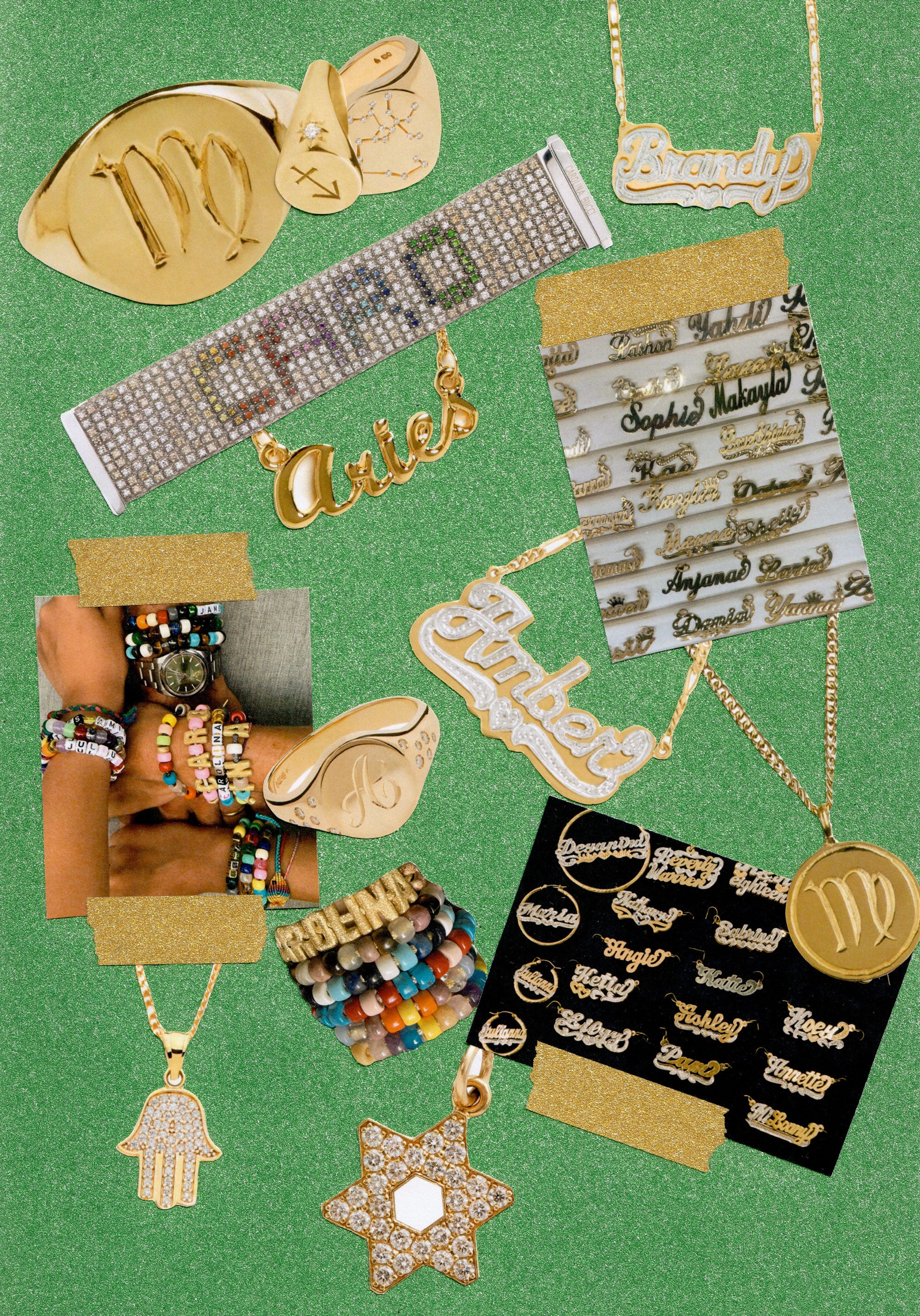In any city, the merging of words with clothing or jewelry is ubiquitous. Walk anywhere in New York to London to Paris, and you’ll see a bevy of It girls strolling around with charms dangling from their wrists or gilded initials strewn across their necks — or a statement on their shirt. Wearing a word, a letter or phrase is the ultimate — most direct — and sometimes even beloved form of sartorial expression. Whether it is a bold allegiance to a brand, a political message scrawled across the chest, or even a heart-felt ode to someone special engraved on a ring, the physical piece of clothing or a piece of jewelry becomes a vehicle for articulation.
This concept of saying something with individual style is the most poignant within the world of jewelry and dates back to ancient times. Now in The Metropolitan Museum of Art, one Egyptian ring harkening back to the BC era, shows engravings of gods and hieroglyphics, transforming from a metal into a talisman that delivers protection or faith to the wearer. Thousands of years later, the concept of engraving and signet rings became popular during the Victorian era. (So did other extremely heartfelt odes, such as mourning jewelry, which included a loved one’s hair threaded into pieces.) During this time, jewelry developed into an expression of affection or love, both a personal — and perpetual — keepsake thanks to engraving a message or a name into the piece of jewelry.



















